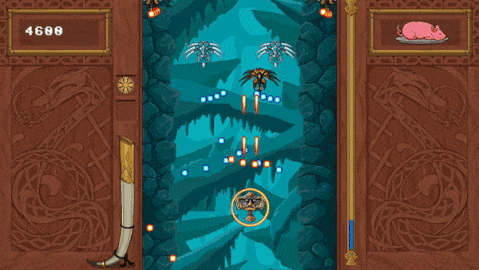
Hammer Time
Project made at The Game Assembly school.
- A 2D game inspired by Ikaruga.
- 8-week development (20h/week) with a team of 5 programmers, 3 level designers and 4 3D artists. Game project 3 at The Game Assembly.
- Made in the school's in-house C++ game engine.
My contributions:
- Player movement.
- Xbox and keyboard input manager.
- Sprite sheet-based animations.
Sprite sheet-based animations:
I had to develop a pipeline for importing sprite sheets into the school's game engine during the project. I came up with a solution where the artist used TexturePacker to export the sprite sheet image and a JSON file that described the coordinates of each sprite. I also developed an animation system capable of switching between different animations.

{"frames": {
"enemy_beam_blue.png":
{
"frame": {"x":3882,"y":414,"w":176,"h":117},
"rotated": false,
"trimmed": false,
"spriteSourceSize": {"x":0,"y":0,"w":176,"h":117},
"sourceSize": {"w":176,"h":117}
},
"enemy_beam_blue1.png":
{
"frame": {"x":2,"y":533,"w":176,"h":117},
"rotated": false,
"trimmed": false,
"spriteSourceSize": {"x":0,"y":0,"w":176,"h":117},
"sourceSize": {"w":176,"h":117}
},One of the most difficult tasks I faced was creating smooth transitions between animations. For animations like player flip, which could not be cancelled mid-animation, I had to ensure that the new animation request only switched to a new animation at the last frame of the previous animation. To do this, I had to set "overrideable": false in the animation JSON file.

...
"flip_blue_to_orange":
{
"frames":
[
"player_blueToOrange1.png",
"player_blueToOrange2.png",
"player_blueToOrange3.png",
"player_blueToOrange4.png",
"player_blueToOrange5.png",
"player_blueToOrange6.png",
"player_blueToOrange7.png"
],
"frames per second": 30,
"overrideable": false
},
...
